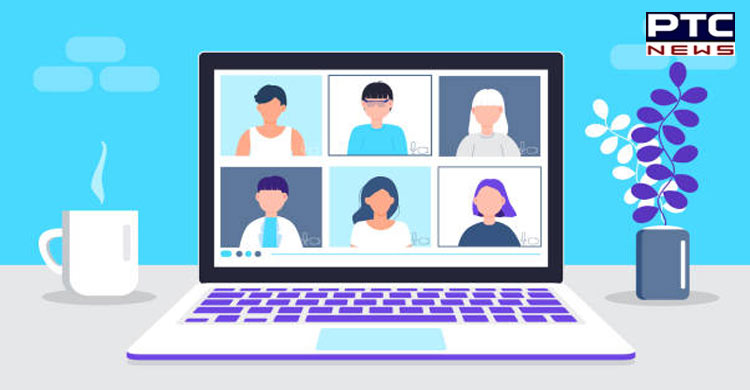

Being exposed to new things makes people 'ready to learn,' says study
Seoul (South Korea), May 27: People learn to identify familiar objects like a dog and a chair even before entering a classroom, simply by encountering them in everyday life with no intent to learn about what they are.
 One of the first studies to provide experimental evidence that people learn from incidental exposure to things they know nothing about and aren't even attempting to understand is a new study. The findings were published in the journal Psychological Science.
Vladimir Sloutsky, co-author of the study and professor of psychology at The Ohio State University says: "Exposure to new objects makes humans "ready to learn."
"We often observe new things out in the real world without a goal of learning about them," Sloutsky said, adding "But we found that simply being exposed to them makes an impression in our mind and leads us to be ready to learn about them later."
One of the first studies to provide experimental evidence that people learn from incidental exposure to things they know nothing about and aren't even attempting to understand is a new study. The findings were published in the journal Psychological Science.
Vladimir Sloutsky, co-author of the study and professor of psychology at The Ohio State University says: "Exposure to new objects makes humans "ready to learn."
"We often observe new things out in the real world without a goal of learning about them," Sloutsky said, adding "But we found that simply being exposed to them makes an impression in our mind and leads us to be ready to learn about them later."
 Sloutsky conducted the study with Layla Unger, a postdoctoral researcher in psychology at Ohio State and the lead author of the research.
The research included five different experiments with 438 people, with all experiments showing similar results.
During the research, participants first took part in an "exposure phase" in which they played a simple computer game while seeing colourful images of unfamiliar creatures. The game provided no information about these creatures, although some participants were unaware that they belonged to two groups - Category A and Category B.
Category A and Category B creatures, like dogs and cats, have body parts that looked slightly different, such as different-coloured tails and hands. Participants in the control group were shown images of other strange creatures.
Sloutsky conducted the study with Layla Unger, a postdoctoral researcher in psychology at Ohio State and the lead author of the research.
The research included five different experiments with 438 people, with all experiments showing similar results.
During the research, participants first took part in an "exposure phase" in which they played a simple computer game while seeing colourful images of unfamiliar creatures. The game provided no information about these creatures, although some participants were unaware that they belonged to two groups - Category A and Category B.
Category A and Category B creatures, like dogs and cats, have body parts that looked slightly different, such as different-coloured tails and hands. Participants in the control group were shown images of other strange creatures.
 Later in the experiment, the participants went through "explicit learning," in which they were taught that the creatures were divided into two categories (named "flurps" and "jalets") and were asked to identify which category each creature belonged to.
Also Read | Transport Minister inspects vehicles, challans 18 buses, trucks
During this explicit learning phase, the researchers measured how long it took individuals to learn the difference between Category A and Category B.
"We discovered that learning was significantly faster for individuals who were exposed to the two types of creatures earlier on than for those in the control group," Unger said.
"Participants who received early exposure to Category A and B creatures could become familiar with their different distributions of characteristics, such as that creatures with blue tails tended to have brown hands, and creatures with orange tails tended to have green hands. Then when the explicit learning came, it was easier to attach a label to those distributions and form the categories."
Later in the experiment, the participants went through "explicit learning," in which they were taught that the creatures were divided into two categories (named "flurps" and "jalets") and were asked to identify which category each creature belonged to.
Also Read | Transport Minister inspects vehicles, challans 18 buses, trucks
During this explicit learning phase, the researchers measured how long it took individuals to learn the difference between Category A and Category B.
"We discovered that learning was significantly faster for individuals who were exposed to the two types of creatures earlier on than for those in the control group," Unger said.
"Participants who received early exposure to Category A and B creatures could become familiar with their different distributions of characteristics, such as that creatures with blue tails tended to have brown hands, and creatures with orange tails tended to have green hands. Then when the explicit learning came, it was easier to attach a label to those distributions and form the categories."
 Another experiment in the study featured people hearing sounds while viewing images of the creatures while playing a simple computer game during the exposure phase. When the same sound was played twice in a row, participants simply pressed a key.
"The images were randomly attached to the sounds, so they could not help participants learn the sounds," Sloutsky said, adding "In fact, the participants could completely ignore the images and it would not affect how well they did."
Nonetheless, participants who saw images of Category A and B creatures learned the differences between them faster during the explicit learning phase than those who saw other unrelated images.
"It was pure exposure to the creatures that were helping them learn faster later on," Sloutsky added.
Also Read | Punjab Govt withdraws security cover of 424 persons
-PTC News
Another experiment in the study featured people hearing sounds while viewing images of the creatures while playing a simple computer game during the exposure phase. When the same sound was played twice in a row, participants simply pressed a key.
"The images were randomly attached to the sounds, so they could not help participants learn the sounds," Sloutsky said, adding "In fact, the participants could completely ignore the images and it would not affect how well they did."
Nonetheless, participants who saw images of Category A and B creatures learned the differences between them faster during the explicit learning phase than those who saw other unrelated images.
"It was pure exposure to the creatures that were helping them learn faster later on," Sloutsky added.
Also Read | Punjab Govt withdraws security cover of 424 persons
-PTC News
